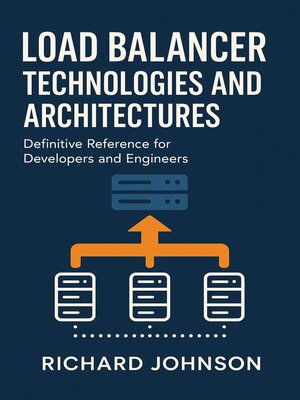Load Balancer Technologies and Architectures
ebook ∣ Definitive Reference for Developers and Engineers
By Richard Johnson

Sign up to save your library
With an OverDrive account, you can save your favorite libraries for at-a-glance information about availability. Find out more about OverDrive accounts.
Find this title in Libby, the library reading app by OverDrive.



Search for a digital library with this title
Title found at these libraries:
| Library Name | Distance |
|---|---|
| Loading... |
"Load Balancer Technologies and Architectures"
In "Load Balancer Technologies and Architectures," readers are guided through a comprehensive exploration of the foundational principles, core concepts, and evolving paradigms that define modern load balancing. The book opens with a historical perspective, tracing the origins of load balancing from early network design to the complex, distributed systems shaping today's digital landscape. It delves into the fundamental terminology, core models, and critical performance metrics, offering valuable context for understanding traffic patterns, application workloads, and their profound implications on scalable network design.
The treatise presents a rigorous analysis of algorithmic and architectural solutions, ranging from classic round robin and least-connections methods to cutting-edge approaches like geo-aware routing and adaptive, machine learning-driven strategies. Readers will discover essential distinctions between hardware and software deployments, the intricacies of hybrid and edge architectures, and the vital importance of high availability, redundancy, and control plane/data plane separation. In-depth coverage extends to practical application-layer topics such as Layer 4 and Layer 7 balancing, session affinity, protocol-specific nuances, and advanced routing capabilities like SSL offloading and header manipulation.
Equipping professionals and enthusiasts alike for today's multi-cloud and cloud-native environments, this book also addresses advanced traffic management, sophisticated security postures, observability, and performance tuning. It surveys emerging trends in AI-driven optimization, 5G edge deployments, quantum-safe networking, and zero trust integrations, culminating in a clear vision for the next generation of self-adaptive, resilient load balancing. "Load Balancer Technologies and Architectures" is an indispensable resource for architects, engineers, and technology leaders seeking authoritative insight and future-proof strategies in the art and science of traffic distribution.







